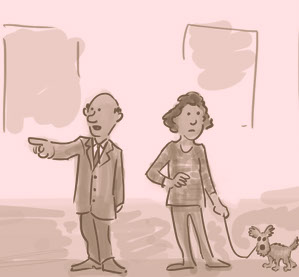SciGen Teacher Dashboard
Unit T3
Claims & Evidence
Lesson: The Theory of Theory
 Duration: Approximately 45 minutes
Duration: Approximately 45 minutes
In this activity, students will distinguish the scientific meaning of theory from its more common and less scientific use.
LEARNING OBJECTIVE
In this activity, students will distinguish the scientific meaning of theory from its more common and less scientific use.
Teacher Tune-up
Teaching Notes
ACTIVITY OVERVIEW
- Considering the use of the word "theory" (15 minutes)
- Speculating about cartoons (15 minutes)
- Develop a theory and compare common and scientific standards (15 minutes)
Considering the Use of the word "theory" (15 minutes)
From Student Reading:
The Theory of a Theory
Wait a second! Isn’t a theory something that we know for sure, knowledge that’s been studied, tested, and proven, like the atomic theory of matter? It’s a serious word, a word that carries weight, right? Researchers study it. Professors teach it. Students are tested on it. Scientifically speaking, that’s true. The dictionary defines “theory” as “a plausible or scientifically acceptable general principle or body of principles offered to explain phenomena.” The germ theory of disease, the cell theory of organisms, and the general theory of relativity are examples of scientific theories that have been built up over time on strong foundations of evidence.
But the word theory has another common meaning that’s nearly opposite! To understand this non-scientific definition, let’s turn to the origin of the word. It comes from the Greek theorin, which means “to look at” or “to observe” or “to speculate.” That term comes, in turn, from the Greek theoros, “a spectator,” which comes from thea, meaning “theater.” Perhaps this connection to the theater is part of the reason the word theory is sometimes used to suggest that something not completely real is going on. Unlike the scientific definition, the common definition leaves room for speculation. It implies that something isn’t proven, that it’s just a hunch.
Speculating about cartoons (15 minutes)
:
Look at the three cartoons. Each cartoon includes several interesting and surprising details that allow students to speculate about what might have happened.



Develop a theory and compare common and scientific standards (15 minutes)
Students choose one of the cartoons and write their theory about what happened. They should use the details from the cartoon but can also use details from their imagination in order to arrive at a theory.
At the end, consider how the use of theory in this activity is different than when discussing a scientific theory. In everyday use, a theory is a plausible speculation; scientific theories are meant to meet a higher standard of proof.
BETA Version - Please send comments and corrections to info@serpinstitute.org
